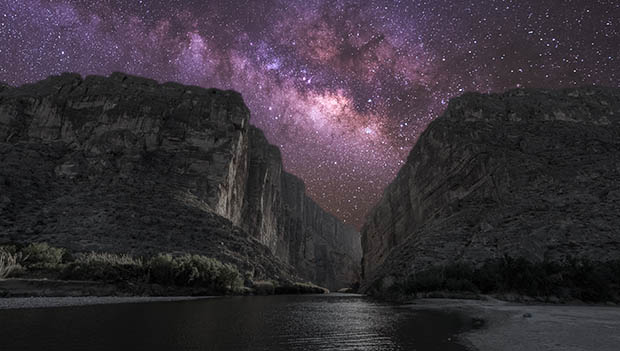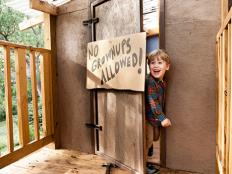
We often plan family movie or game nights, but what about stargazing? One of humankind's oldest pastimes, stargazing invites conversations about place, space and time—a guaranteed way to spark wonder and curiosity in your kids. With warmer summer nights right around the corner, it's the perfect time to start planning and preparing for your family's next stargazing campout.
Whether viewing a clear night sky is something you can do from your backyard, or something you have to take a little drive for, you won't regret putting in a little extra time to make sure everything comes together to really get the most out of your time looking up.
From researching the perfect spot, to setting your family up with the right technology and gear, we pulled together our best tips and tricks to help you prepare for a successful stargazing evening with your little ones!
Light (or Lack Thereof)
It almost goes without saying that you want to minimize ambient light to better see the starlight. Kids can understand at a pretty early age that the stars go away in the daytime because the sun (our nearest star) outshines them when it's in the sky. So, the first thing to consider when planning your family stargazing night is light.
Do you live in a city or a neighborhood with street lights? What is the nearest campground to you, and what kind of light do they have at the campsites? The goal is to try to find a location with as little light as possible. If you're really ambitious, check out some of these locations, known for their minimal light pollution, thus creating the best stargazing environments in the US.
Don't Forget About the Moon
While the moon is beautiful and something to observe all on its own, it's not your best friend when it comes to seeing the stars. The brighter the moon, the fewer stars you will see. Try to plan your outing on a new moon night for the optimal stargazing conditions!
Click here to type in your location for specific details on the moon phase and location for a specific day of the year.
Tools and Tech
For many, the first thing that comes to mind when thinking of stargazing tech is a telescope, but there's really quite a bit that you can see with just the naked eye. The main thing you'll need is something to reference to know what you're looking at in the sky. From planet and star names to constellations and star clusters, a basic star chart will be necessary at the very least, and you can find them here or here.
A little more user-friendly than most star charts are the many apps available on both iOS and Android devices. A few of our favorites include: Star Walk 2, Solar Walk, Star Chart and SkyView Lite. With the exception of Star Walk 2 for iOS users and Solar Walk, which both have a small cost, these apps are free to download and use. Once on your phone you can point your camera to the sky, and it will show and identify for you the celestial bodies that are in the night sky (Solar Walk is great for kids too, since they can interact with the app and learn more about what they're looking at).
If you do decide to ramp up your night sky viewing with a telescope, there are endless options out there. To get you started looking, we personally love the Galileoscope Telescope Kit. This telescope does require assembly and doesn't come with its own tripod stand (you'll definitely need one to steady your hand). However, the easy-to-follow steps allow for users to consider not only what they are able to see through the lens, but how the scope itself works—fun science and history as it's designed after Galileo's original scope! Your kids will enjoy helping build and use this tool with you, and the quality and magnification make Jupiter's moons and Saturn's rings visible in the night sky!
The Extras
Now, the last thing you want is to pull up ready to go in the right place on the right night with the right tech and find that everyone is so freezing that they want to go home! Don't forget to take a moment to pack the basics: jackets, blankets, hats, gloves, snacks—you know the routine!
A basic flashlight or headlamp is also something you'll be glad to have, especially if you are using a printed star chart instead of an app to figure out what you're looking at. Since you want to minimize light and keep your eyes adjusted to the dark, you'll also want to consider making it a red light instead of a white light, and this can be easily achieved by covering the light with a thin red film (saran wrap or plastic works great). Red light affects our vision much less than white light.
Get Excited!
Finally, before you go, get your kids reading, thinking and interested about night sky viewing with one of these books: a beautifully-illustrated introduction to the night sky complete with a star chart and glow in the dark star stickers, a book designed especially to help kids find constellations in the night sky or a book that includes 50 different things you can find in your night sky with images to help them spot them on their own.
READ THIS NEXT: 9 National Parks to Visit with Your Kids









Discuss This Article